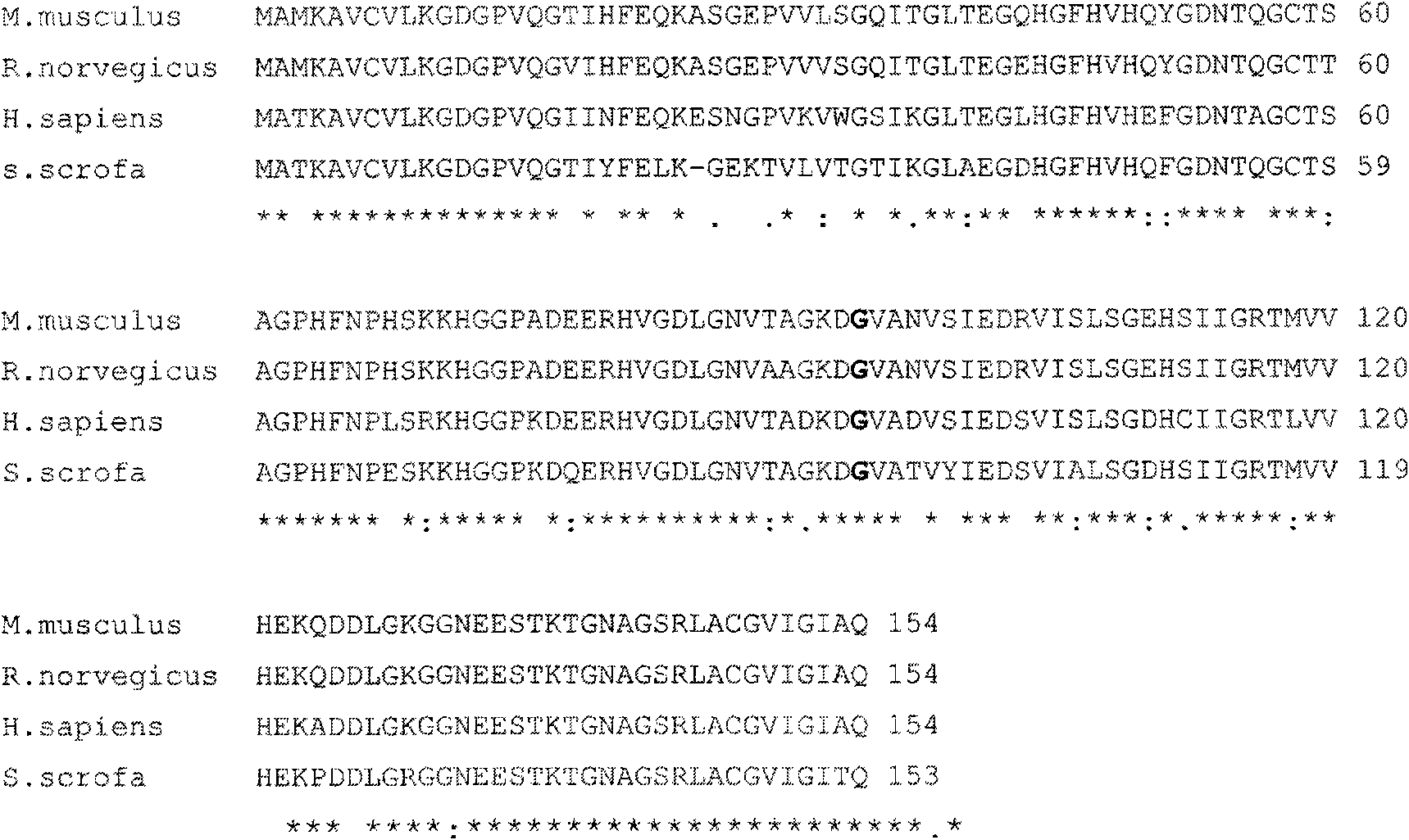An animal model and a method for producing an animal model
A model, non-human animal technology, applied in the field of non-human animal models, can solve problems such as the generation of pig models
- Summary
- Abstract
- Description
- Claims
- Application Information
AI Technical Summary
Problems solved by technology
Method used
Image
Examples
Embodiment 1
[0341] A Transgenic Pig Model of Amyotrophic Lateral Sclerosis (ALS)
[0342] To create a transgenic pig that can be used as a potential pig model for the human neurodegenerative disease ALS, the mutation Gly93Arg was introduced into the gene of pig SOD1 by site-directed mutagenesis. Mutations were chosen based on protein structure inference, as the crystal structure of human SOD1 revealed an extremely condensed structure, which suggested that substitutions with large charged arginines at the positions of small, relatively flexible glycines could potentially cause protein Major changes inside. Furthermore, several different substitutions at this position cause ALS in humans, including the G93R mutation [45, 46]. To prevent the possibility of truncating important elements within the DNA construct after the SMGT step, the DNA fragment already containing the porcine SOD1 cDNA contained additional 5'- and 3'-guide nucleotides of the CMV promoter and SVpolyA fragment. In general,...
Embodiment 2
[0453] Transgenic pig model for Parkinson's disease
[0454] Cloning of porcine SNCA cDNA
[0455] Full-length porcine α-synucleus (SNCA) cDNA was isolated from the cerebellum by a combination of RT-PCR and RACE. Initially, blast searches were performed using the human SNCA cDNA sequence using GenBank (http: / / www.ncbi.nlm.nih.gov / Genbank / index.html) and the porcine EST database of The Danish Institute of Agricultural Sciences (DIAS). Use NCBI Blastall, select blastn, and the lowest value is 10-8 to search for sequence similarity with gapped alignment. The porcine cDNAs thus identified were used to obtain oligonucleotide primers for the clones and as interrogation conditions for further searches in the local genome DIAS sequence database.
[0456] The porcine cerebellum tissue used for RT-PCR cloning of porcine SNCA was obtained from adult pigs. After resection, the tissue was minced into pieces and pulverized in liquid nitrogen. Total RNA was isolated by the RNeasy method ...
Embodiment 3
[0542] Transgenic Pig Model Animals of Alzheimer's Disease
[0543] PSEN1 and PSEN2 isolation and sequencing
[0544]Pig brain, lymphocyte and liver RNA was isolated using TRI-reagent (Sigma). For RT-PCR of PSEN1, the following primers were used (PSEN1 forward, 5'-TGGAGGAGAACACATGAAAGAAAG-3' (SEQ ID NO:95); PSEN1-forward-EcoR 15'-GGGGAATTCTGGAGGAGAACACATGAAAGAAAG-3' (SEQ ID NO:96 ); PSEN1 reverse EcoR1, 5'-GGGGAATTCCCTGACTTTGTTAGATGTGGACAC-3' (SEQ ID NO: 97). The reverse primer was used to incubate at 50°C for RT-PCR reaction for 60 minutes, and then PSEN1 forward-EcoR1 and PSEN1 reverse -EcoR1 primer for PCR with reaction conditions: 3 min at 94°C, 35 cycles of 45 s at 94°C, 30 s at 62°C, 2 min at 68°C, followed by a final extension step at 68°C for 7 min The amplified DNA fragments were purified by agarose gel and sequenced directly or EcoR1 cloned into pCDNA3, followed by DNA purification and sequencing. For RT-PCR of PSEN2, the following primers were used (PSEN2-forward,...
PUM
 Login to View More
Login to View More Abstract
Description
Claims
Application Information
 Login to View More
Login to View More - R&D
- Intellectual Property
- Life Sciences
- Materials
- Tech Scout
- Unparalleled Data Quality
- Higher Quality Content
- 60% Fewer Hallucinations
Browse by: Latest US Patents, China's latest patents, Technical Efficacy Thesaurus, Application Domain, Technology Topic, Popular Technical Reports.
© 2025 PatSnap. All rights reserved.Legal|Privacy policy|Modern Slavery Act Transparency Statement|Sitemap|About US| Contact US: help@patsnap.com



